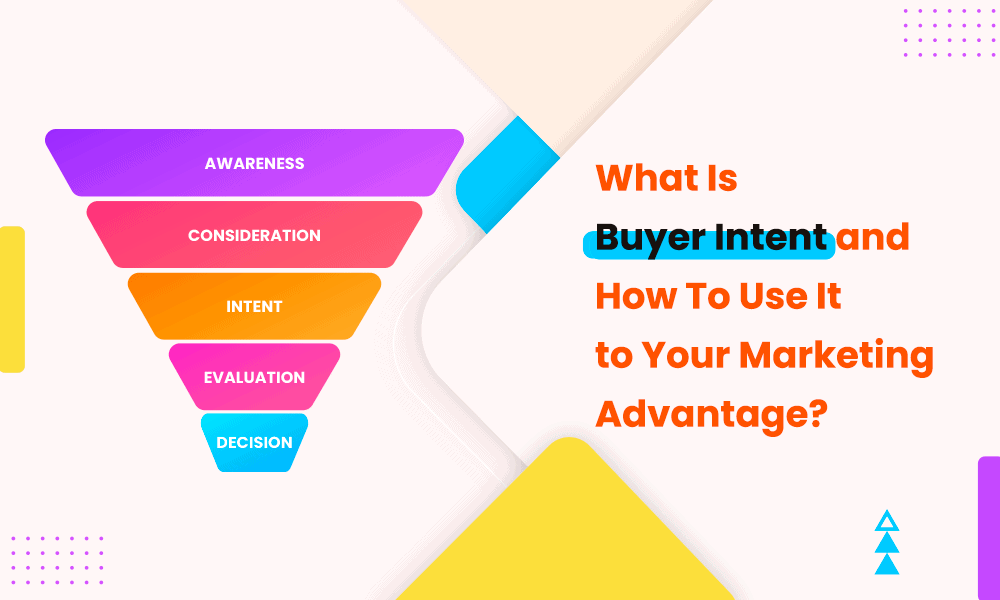Picture this: What if you could see what your target audience is looking to purchase at this precise moment, and it matches what you have to offer? Wouldn’t this make everyone’s life a cakewalk?
Buyer intent data is the icing on the cake that enables you to do exactly this. Rather than betting on a bunch of ‘maybes’, you can directly approach companies or individuals that are more than ready to invest in what you have to offer.
In this detailed guide, we are going to explain the enigma of buyer intent data and how it can be molded to your marketing advantage.
Table of Contents
What is Buyer Intent?
A buyer intent or ‘buying intent’ is the prospect of a customer purchasing a product or service from a company. It is an important marketing metric used by marketers and sales professionals to measure whether customers are purchasing their products/services, and offers insights into customer behavior and target groups.
Purchase intent helps save resources and money for a company. It helps them focus on the customer groups that are most likely to buy the product instead of playing with the probability of whether a customer will make the purchase or not.
Buyer intent offers a narrowed-down, focused, and more personalized approach to B2B marketing, which helps improve conversion rates and ROI.
Why Is Customer-Centered Marketing Important?
At the dawn of marketing, the aim was to promote your business and highlight how amazing your product is.
Today, it is centered around the customer and how to address and target the wants and needs of the customer.
At the core of modern-day marketing, delivering the right product, to the right audience, at the precise time, through the right channels, is what makes marketing efficient today.
Understanding the buyer’s journey right from user behavior to sales action is crucial to customer-centered marketing. Buyer intent is one such concept in the customer-centered marketing branch of modern-day marketing that is transforming the way brands and customers interact, notably with the B2B sector.
With the extensive amount of data available today across all sectors, B2B customers today are well-informed and are influenced by the information.
Fact: Almost 57% of B2B buyers have already made a decision about a product before approaching a sales rep.
Now that we’ve discussed the importance of buyer intent data, let us take a closer look at how a holistic approach to buyer intent can effectively grow your sales while enhancing the process for both buyer and the company.
Read also: The Customer-Centric Model: Your Definitive Guide
The Buyer Intent Playground
Buyer intent at the basic level is understanding what components make a great lead and backtracking from there.
Revolving your marketing campaign around your customer’s needs and interests is what buyer intent is all about at its crux. To approach the buyer-intent journey, the most crucial component is the data.
So, what is buyer intent data?
Buyer intent data is information on the behavior of a user, which is a set of key indicators that help companies identify qualified leads. With this aggregated data you get a clear outline of where your target audience stands in their purchase journey and understand how best to approach them and keep them hooked.
This data also gives insight into how to convert these highly qualified leads into valuable customers.
It might seem a little complex, but candidly, you are probably already implementing this in your marketing campaign.
Buyer intent data can vary and is a vast network of factors, but here are a few key indicators of what typical buyer intent data looks like:
- Frequency of visits on your webpage or website
- A user spends longer time on a specific section of your page
- Level of engagement with different content types, like sales promotions on social media, or marketing emails.
- Purchasing patterns
- Overall browsing activity as part of the buyer’s journey
If you are familiar with a buyer’s journey, you would know how important knowing your customer is, and that the best way to approach a customer head-on is by collecting maximum data on the client profile.
If you are here, you want to grow your sales and effectively acquire qualified leads through buyer intent data, you are in the right place.
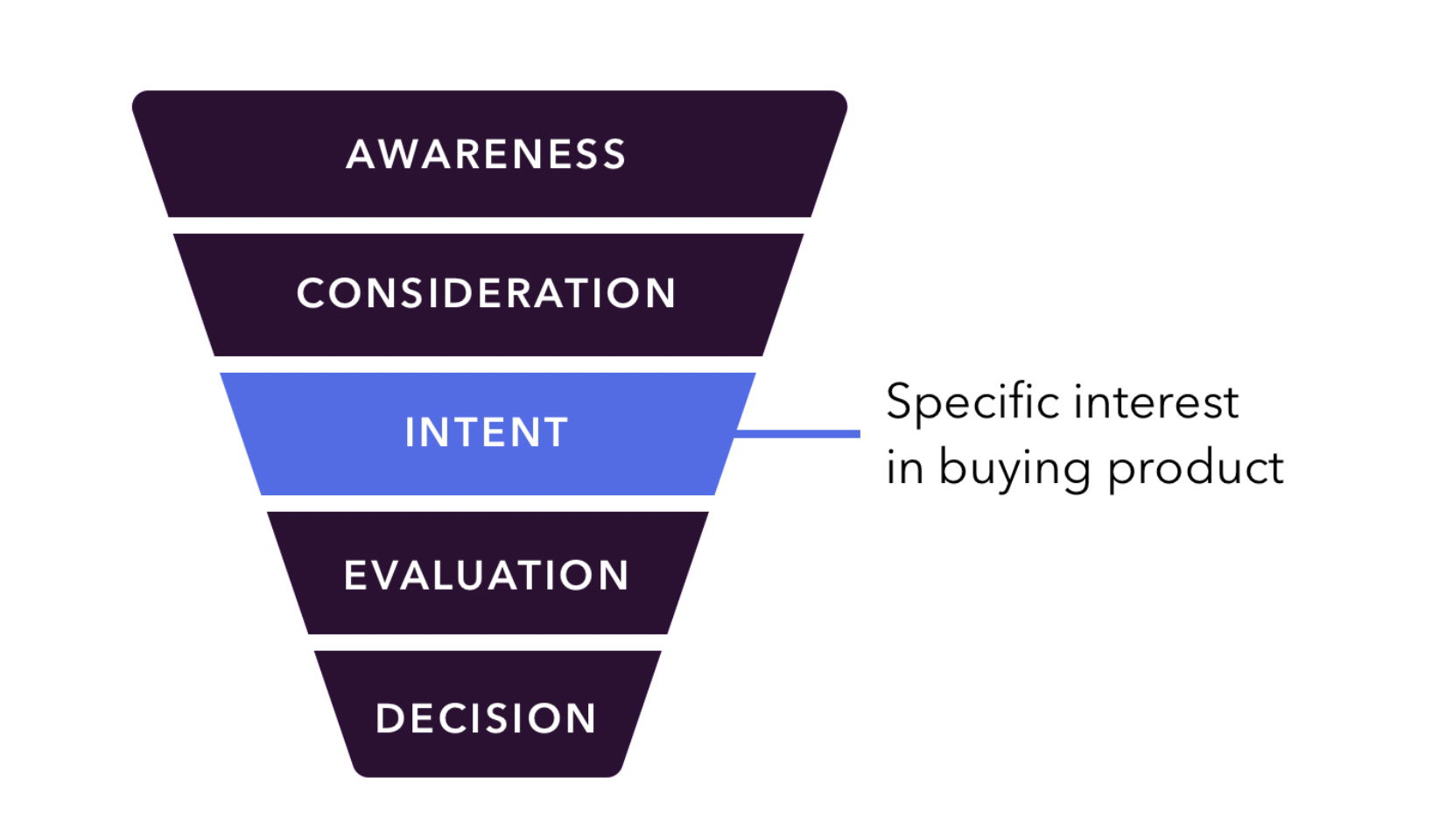
Categories of Buyer Intent
This blog post is aimed towards understanding the consumer’s mind, i.e., the buyer intent and how to use it to your sales advantage better. Today, consumer behavior positively means online consumer behavior.
There are three major types of intent-oriented variation that you need to be aware of before diving deep into buyer intent data:
- Active buying intent: This potential prospect is actively researching a particular product and is in immediate need of the product or service and will likely purchase on an immediate basis.
- Passive buying intent: This category of people is mostly unsatisfied or wants to change to an alternative product they are already consuming. If made aware of the options available, they will most likely make the switch, often faster than a consumer with active buyer intent.
- Awareness-based intent: People under this segregation are still in the stage of doubt about whether to buy a product or not. They are in the process of making themselves well aware of a product and may engage in extensive research to make an informed decision. They are open to new brands and services and welcome new alternatives. They are essentially in information collection mode.
So, now that you are aware of the key types of buyer intents, you will be able to understand buyer intent data better.
Moving on, let’s see how buyer intent data helps businesses.
Also read: Buyer Enablement — Make Your Customers Start Believing & Buying
What Is Buyer Intent Data?
Buyer intent data is a collection of behavioral or intent signals that helps brands identify potential buyers during the buyer journey. To give you a clearer picture, here are a few behavioral indicators of purchase intent:
- Number of visits of a customer on your site.
- A potential customer viewing a specific page on your website frequently.
- A person interacting with the content on your website, such as reading specific blogs or articles on your web page.
- A potential customer actively responding and engaging with your sales emails.
Any data that signals a lead with intent to purchase or preparing to purchase can be construed as buyer intent data.
Read also: Customer-Centric Model: A Step-By-Step Guide
How Buyer Intent Data is Profitable for Businesses
What is all the buzz about having accurately projected data about buyer insights compared to saying something generic like a demographic or interest-based segmentation of customer profiles?
The answer is simple – getting your hands on buyer intent data will help you essentially ‘push‘ the right customer to buy the product willingly. What’s more, with B2B intent data, artificial intelligence can impact both parties’ decisions.
AI-based behavioral predictions have proven to be quite accurate. AI tools can help generate B2B buyer intent data that makes the lives of salespeople easier.
When equipped with such high-quality, predictable data, you will be able to project the right information to highly qualified leads accurately, thus proactively ensuring the customer dives right in and buys the product. Armed with valuable buyer intent data, you are one league above when it comes to marketing.
To make the benefits of using buyer intent data clearer, here is a rundown of its major perks:
#1. Improved Outbound Sales
Cold outreach may not always work. According to stats, only about 18% of marketers have proven records of cold outbound marketing providing qualified leads.
Combine it with useful buyer intent data; you have cracked to code to gain qualified leads. Buyer intent data gives you valuable insight into the buyer’s mind. It not only shows who is interested in your product but also demonstrates what they are interested in.
This type of powerful information actively improves your outbound sales strategy, thus enabling you to procure highly qualified leads with cold outreach.
#2. Definitive Account-Based Marketing
Account-based marketing is largely based on the user data collected. Buyer intent data takes the data collection process for effective targeting one step further by analyzing important information such as the number of visits on your page, what pages were read, and the main interest areas.
This information can help marketers understand and outline the buyer’s journey and create targeted and personalized account-based marketing campaigns.
Intent data lets you effectively drive the prospect in the right direction in their buying journey.
Read also: The 101 of Account-Based Marketing – An Exhaustive Guide
#3. Reduction in Churn Rate
Buyer intent data can be effectively leveraged in converting possible prospects into assured clients. The information by that approach will give you insight into how to better reach potential prospects and give you a certain edge over your competitors.
Based on web activity, when a potential prospect searches for particular additional solutions on the same product, it is an indicator of the product not being delivered in the right way or that it did not address their exact needs.
With buyer intent data, you will be able to identify these pain points and bridge the gap with additional information, hence reducing the churn rate.
#4. Reliable Data and Increased Efficiency
Buyer intent data, when gained and used across reliable resources, can be invaluable across the various levels of a company. Often, high-value and high-volume resources form the backbone of a constructive marketing scheme, and with buyer intent data, this information offers more than just information on potential prospects and how to approach them.
The process of buyer intent data collection duly increases efficiency while promoting factual, data-driven decisions, which in turn creates a robust sales strategy, creating a synergistic situation for all.
Read also: The Marketing Funnel and Everything You Need to Know
How and Where Is the Buyer Intent Data Collected?
Now that we know what buyer intent data is and how important it is for marketing, let us see the different types of buyer intent data and how they could be used in your toolset.
#1. First-Party Intent Data (Internal)
This category is the intent data collected first-hand within your business from direct resources. This data is collected within the organization without any outside involvement.
Here are a few examples of first-party intent data sources:
- Direct interaction of customers with your sales team
- Various social media engagements
- Direct email interaction with a potential buyer
- Data collected from marketing automation, such as signup forms on your websites.
- Data collected from cookies and ad interactions
- Data and insights gained from Google Analytics
First-party intent data acquisition is dynamic, as you can use your resources to capture high-conversion leads efficiently. As you have complete control of the data collected, you have the freedom to customize and immediately implement it into your marketing campaign.
Setting up a robust marketing automation system and a good sales campaign will ensure the data collected first-hand will bolster your marketing initiatives toward prospective clients, thus influencing them to make the purchase.
Here is a chart that explains how B2B marketers segment and use the first-party intent data collected.

This should give you a fair idea of how first-party intent data can be used.
#2. Second-party Intent Data
Second-party intent data is a unique source of data collection. The major resource for second-party data is another company’s first-party data.
Data often collected from review sites such as G2 or TrustRadius offers important customer insights for B2B marketers. These often include customer surveys, customer reviews, and other customer interactions that are data recorded.
Here are some intent data collection types from second-party resources:
- Customer surveys
- Customer feedback forms
- Product vendor engagement through webinars, etc
- Product category interactions
#3. Third-Party Intent Data (External)
Third-party intent data is the king of intent data collection. With first-party data, the resources from where you get the data are limited.
With third-party data, you have millions of resources to collect information.
This is because this type of purchase intent data is the aggregate of research and buying activity across various channels, often owned by others, which gives you deep insight into the buyer market. Every single digital footprint left behind is a potential data source for third-party intent data.
With the help of third-party data collection tools (more on this in the next section), you will be able to analyze the colossal data in your hand and take action to influence your buyer intent marketing campaign positively. With the introduction of AI into big data, third-party intent data collection at source has become much more efficient.
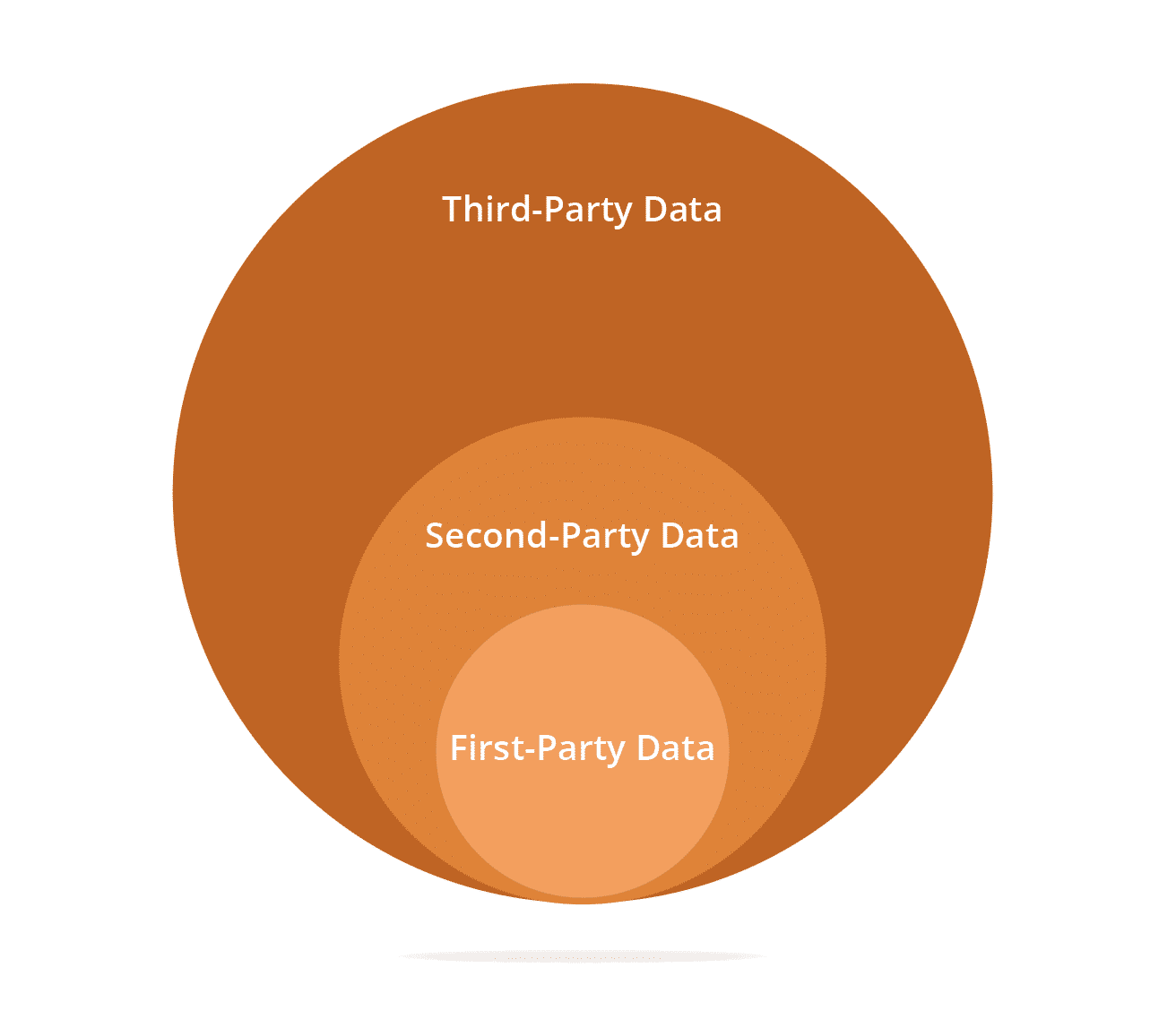
To truly harness the power of third-party intent data, it is important to have the right data tools that will help you understand your customers, interpret intent signals, and configure the best course of action to acquire more customers.
Read also: The Extraordinary Power of Solving Customer Needs
Tools and Tips To Collect Buyer Intent Data
Now that we have covered all the basics of buyer intent data collection, let us now explore how you can collect intent data for each type listed above.
This section covers all the tools and methods you can use to collect buyer intent data.
#1. Collecting First-Party Intent Data
Businesses collect first-party data in various ways and have been doing this for a long time. Remember how you were asked to sign up or drop your business card at local trade shows?
Yes, that was first-party data collection.
The present-day online scenario is quite similar, where customers are asked to sign up and drop contact information. Here are other ways companies are implementing first-party intent data collection.
1. Social Media Marketing tools
Social media such as Instagram or Linkedin have tools that help you track your leads and study their behavioral patterns.
With built-in analytics tools, you can actively track who is most interacting with your account and the engagement with your posted content. Based on this data collected, you will be able to understand how best to target these customers.
2. Contact Forms
With marketing automation tools, such as EngageBay or HubSpot, you will be able to create automated forms that will capture information and contact details from potential clients.
Some examples of capturing potential lead information on your website include booking a free demo CTA, Webinar links, newsletter subscriptions, and website resources. Although quite effective in collecting data, this data isn’t often viable as most customers are still in research mode during this buying cycle phase, and it does not guarantee a lead conversion.
3. Interactive Marketing Tools
Interactive marketing tools such as chatbots on your website are a great way to initiate the first conversation with a potential customer on your website.
They are also a good buyer intent data collection resource without much effort and benefit for both parties.
Conversational marketing tools such as intercom and drift are also effective for the same.
To make the data collection more personalized, try tailoring the data collected to the automation of the bots. This will make the customer experience much more trim and thus will influence the customer to buy the product.
#2. Collecting Second-Party Intent Data
As mentioned in the above section, second-party data is collected from other platforms with specific data collection purposes, such as customer surveys and reviews.
Data is collected, stored, and communicated to the parent organization each time a user uses these services.
How this essentially works: The data collected from various users is added to a common repository. Companies or intent data providers use this information to gather insights and tailor a focused marketing strategy.
However, you will need a second-party intent data vendor specific to your needs to access this data. For instance, if you are a B2B SaaS company, you can get specific customer reviews from websites such as G2.
Depending upon your niche market and the type of customers, you can choose from a range of second-party intent data vendors to collect your purchase data from.
#3. Collecting Third-Party Intent Data
There are a gazillion methods and tools to collect third-party intent data. Knowing what works best for you and how best to implement it into your marketing initiatives is the trick.
Here are some effective third-party intent data collection tools:
1. Reverse IP/DNS lookups
Reverse IP and/or DNS lookups tell you the location of the person viewing your website.
By using the IP address of a person visiting your website on a digital device (such as a phone, tablet, or computer), you can identify the approximate location of the person.
Although not entirely accurate, as the IP address could vary depending upon the device used by the person, it gives you a fair idea of the geographic location and could be subsequently used to track the contact information of the visitor.
Also, this helps you target ads based on their locality and offer more personalized content, which may influence them into making a purchase.
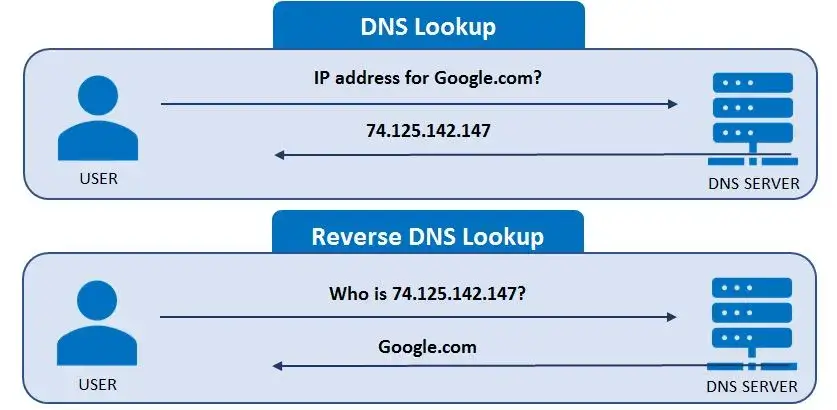
2. Tech Stacks
Technology stacks are a set of tools and software used by a company to automate and make their daily operations more seamless.
The data from technology stacks, known as tech stack data, is valuable to the company as it displays a prospective client’s purchase history and behavioral patterns, software requirements, and also helps analyze the spot gaps that can be filled with your company’s products.
This tool also gives companies valuable insight into the competitors, by helping you find companies or customers using your competitors’ products.
This tool/software gives invaluable insight into the consumer market and can be a data-collection asset to a company.
3. Keywords Research
Keyword research is an effective tool that can be used to filter prospects that align with a specific product use case.
There are many third-party keyword research tools such as Google Ads, Semrush, and more, some even powered by AI. With proper keyword research and implementation, you will be able to find potential leads that fit your particular product use case.
Keyword research goes a long way in collecting filtered buyer intent data.
4. Firmographics
Data points such as Firmographics, which are essentially financial information of an organization, offer insight into the commercial side of a company.
Information such as quarterly or annual targets and funding history is what firmographics is all about. Based on this data collected, companies are segmented into different financial groups.
This is a key marketing aspect for B2B buyer data intent.
Firmographics are collected from this-party tools and save the financial and sales team a lot of money, time, and resources. They help in moving firmly towards data-driven and evidence-based qualified leads rather than baseless leads.
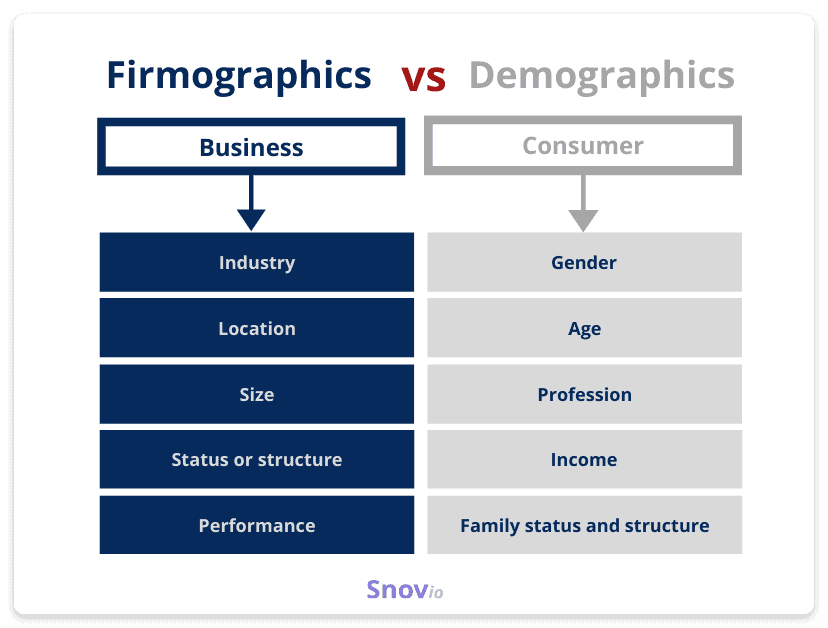
5. Competitor Analysis
The phrase — Keep your friends close, your enemies closer — is the word to live by in buyer intent data collection.
Competitor analysis is a key aspect of buyer intent data collection.
Tracking your competitors’ insights, such as technographics, firmographics, behavioral patterns, and contact renewals, will give accurate data on their high-intent buyers. Based on these indicators, you can win over your competitors’ customers and have higher lead conversion rates and customer success.
6. Market Updates
It is important to keep track of the market and look out for news on a company’s growth, investment, and funding, as these can be key intent signals.
A company’s growth or new acquisition could mean they are interested in expanding their business and hence would be on the lookout for new vendors.
Some additional information, such as recent hires, a recent funding or investment opportunity, could also be a great way to start a conversion when you are talking to potential clients. Remember that tracking a company’s growth (or loss) is an important part of the process, as the better you know your clients, the better you will be able to serve them.
Read also: Holiday Promotions: 5 Ideas To Outsmart Your Competition
What Next: Processing the Collected Data
You have the data collected, and you’re ready to win over customers. Just one little hiccup — what is the right way to process all this buyer intent data?
Here are three ways to map out buyer intent data:
Fresh engagement
One of the tell-tale approaches to processing intent data and approaching a potential customer is by analyzing how recently the customer engaged with your content.
The more recent the engagement, the faster you will need to approach the client. The longer you wait, the chances are the client will have already made the purchase or made a buying decision.
The initial rush matters in sales. A study has shown that almost 35-50% of deals go to marketers who reach out first. The best time to reach out with the buyer intent data in hand is when the consumer is looking to make a decision during the initial stages of research.
This time frame is when you will be closing the most deals.
Frequency of engagement
The frequency of engagement is another key indicator and is an essential step in approaching a potential client.
The more frequently potential lead accesses your page or view your webpage, the more likely to be interested in the product you have to offer. It also provides insight into what stage of the buying cycle they are in.
This would be a great time to initiate dialogue with the customer as this is the time frame where they are most interested in your product. If you miss this window, you might lose out on an important lead.
Level of engagement
Lastly, the level of engagement gives you valuable insight acumen into the potential customer’s mind and their immediate interest in your product.
Engagement is a leading indicator in most marketing campaign processes and it’s the same with buyer intent data.
The more a customer engages with your site (this could be through frequent web visits, engaging with a chatbot, or approaching you directly through an email/call) the more they want to make the purchase or at least get to know more information about your product.
It would be advisable to approach a potential client with a high level of engagement with more additional information concerning a product to strengthen their decision to make the purchase.
Read also: 15 Eye-Catching Exit Intent Popup Examples for More Conversions
The Bottom Line
This blog post is geared towards leveraging buyer intent to bolster your marketing efforts and gain highly qualified leads on a whim.
While we have covered everything about buyer intent data, and its (many) advantages it is important to note that it can be a rigorous task in itself while beneficial in the long run.

There’s plenty of fish in the sea, and buyer intent data is the hook to narrow down your search and catch the big fish at the right time, lower your churn rate, and improve your ROI.
Need help getting started? You are in the right place! EngageBay is loved by more than 46,000 businesses for powering their marketing automation, sales automation, and CRM needs.
Need more details first? Talk to one of our experts and get a free demo today!
